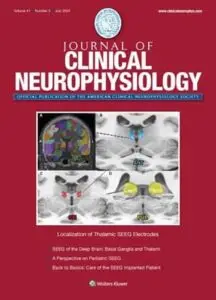
EEG Microstates in Psychogenic Non-Epileptic Seizures
Catania C, Mancuso M, Mazzeo A, et al.
Clinical Neurophysiology (2025)
- Clinical Study, Research Translation
Key Takeaways
- Changes in brain activity, called EEG microstates, differ between resting and seizure states in people with psychogenic non-epileptic seizures (PNES).
- These changes may help us understand the mental processes happening during seizures.
- Resting brains in people with PNES show more self-reflective thinking, potentially explaining some symptoms.
- Understanding these brain activity patterns can help improve diagnosis and treatment planning.
- Future research is needed to explore these findings in patients with different types of PNES symptoms.
Click to read full summary
Overview
This summary looks at how brain activity differs during resting and seizure events in patients with psychogenic non-epileptic seizures (PNES), using a tool called EEG microstate analysis. Researchers studied 22 people with PNES to better understand how these seizures occur in the brain, particularly focusing on seizures without noticeable movement, contrasting with 24 age and sex-matched individuals without PNES.
Overview
The study involved comparing EEG brain activity patterns between people with PNES during rest and during episodes, alongside comparisons with individuals without these conditions.
Method:
-
- Participants: 22 PNES and 24 healthy controls.
- What was studied: Brain activity during resting and PNES episodes.
Key Findings:
-
- EEG microstate C, linked to self-reflection, shows increased activity at rest and decreased activity during PNES events.
- These changes suggest a shift in brain activity, possibly explaining altered consciousness during seizures.
- EEG measures also indicate a potential adaptive neurological response to PNES, impacting therapy approaches.
Limitations:
-
- The study focused only on specific seizure types (akinetic), possibly not generalizing to all PNES manifestations.
Next Steps
If you have FND, here are some steps you can consider:
- Discuss with your healthcare provider about EEG testing as part of your diagnostic process.
- Use this information as a talking point to understand the importance of brain activity monitoring in managing PNES.
- Keep track of seizure triggers and patterns to help tailor your treatment plan.
- Engage with FND support groups to share experiences and strategies.
- Stay hopeful, as ongoing research deepens our understanding and improves management strategies for PNES.
Reference
Catania C, Mancuso M, Mazzeo A, et al. EEG microstates during resting-state and dissociative events in patients with psychogenic non-epileptic seizures. Clinical Neurophysiology. 2025; 173: 124-131. doi:10.1016/j.clinph.2025.03.002
This summary is provided for informational purposes only and does not constitute medical, financial, or legal advice. It is not intended to replace professional consultation or treatment. Always consult qualified healthcare providers regarding your specific circumstances, symptoms, or questions.
